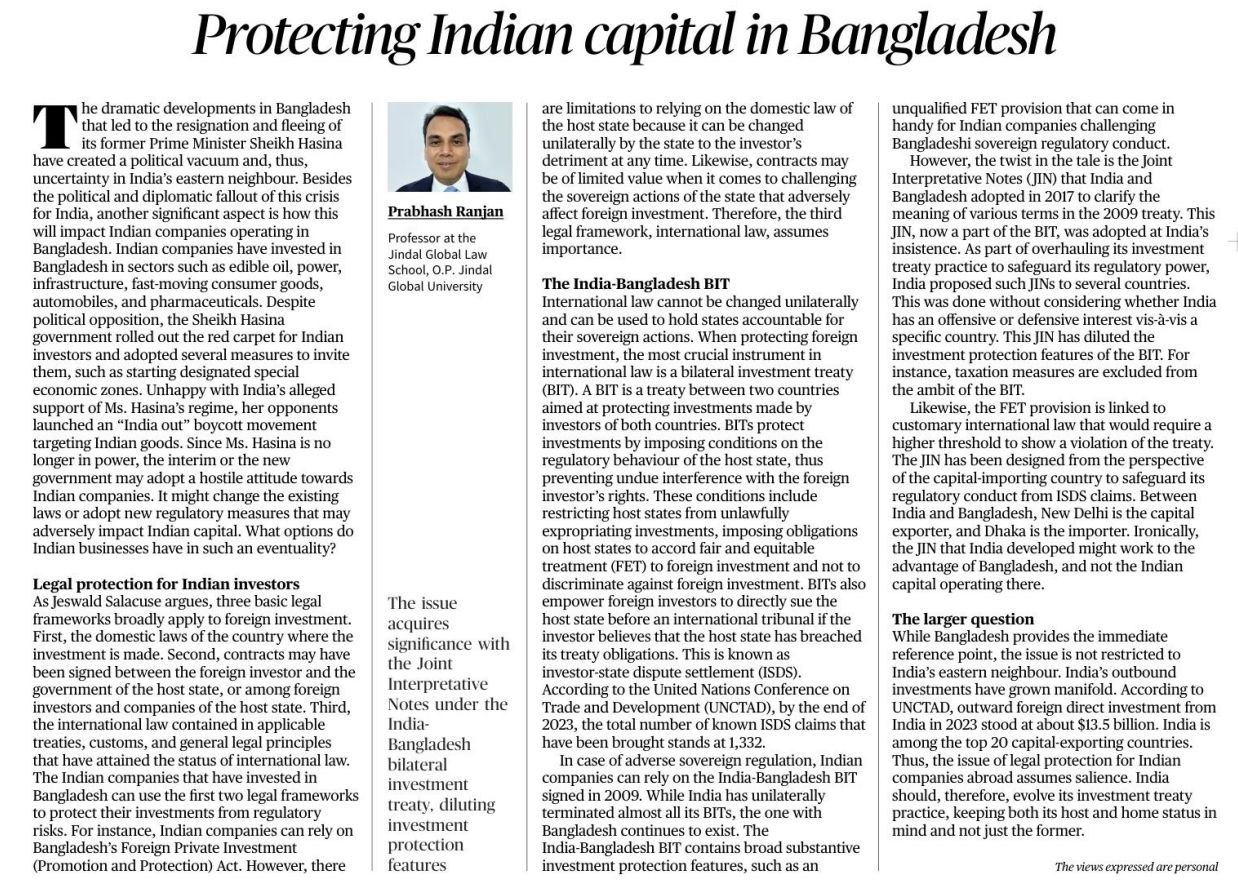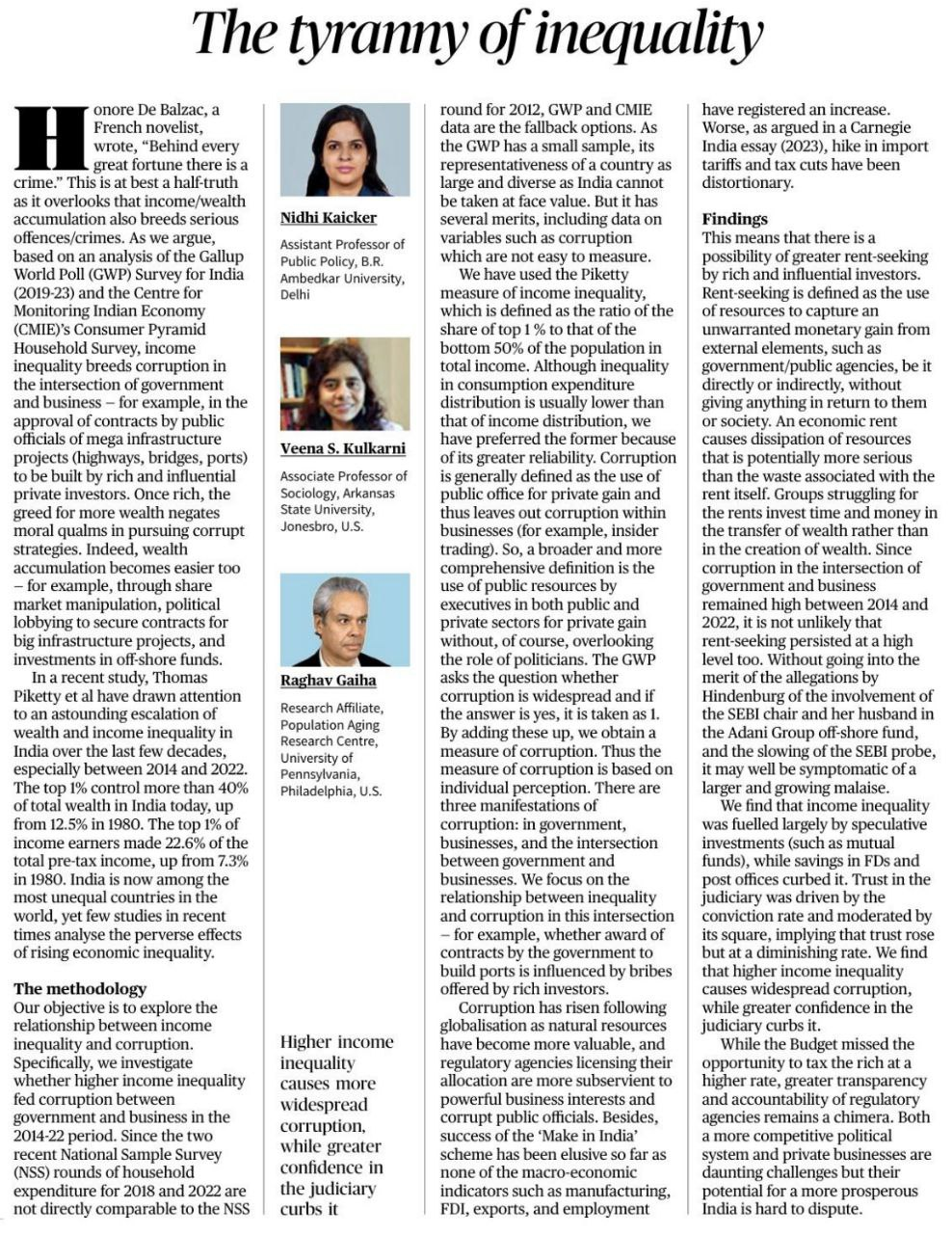Protecting Indian Capital Bangladesh: Key Insights
Introduction
Recent political upheaval in Bangladesh, marked by the resignation of Prime Minister Sheikh Hasina, has introduced uncertainty for Indian investments. This note examines the impact on Indian companies, legal protections available, and strategies to mitigate risks.
- Risks from Political Instability
- Political Vacuum: The power shift in Bangladesh could lead to adverse regulatory changes for Indian businesses.
- Sectors Affected: Indian investments span edible oil, power, infrastructure, FMCG, automobiles, and pharmaceuticals.
- Legal Frameworks for Protection
- Domestic Laws and Contracts
- Domestic Laws: Limited by the host state’s ability to unilaterally alter regulations.
- Contracts: Provide some protection but may be insufficient against sovereign actions.
- International Law and BITs
- Bilateral Investment Treaty (BIT): The India-Bangladesh BIT (2009) includes protections such as Fair and Equitable Treatment (FET) and non-expropriation.
- Joint Interpretative Notes (JIN) 2017: Dilute protections by excluding taxation measures and linking FET to customary international law, increasing the threshold for claims.
- Strategic Responses for Indian Companies
- Leverage BIT: Utilize the BIT’s FET provisions to challenge adverse regulations.
- Diplomatic Engagement: Seek support from the Indian government.
- Diversify Investments: Reduce reliance on a single market.
- Legal Preparedness: Ensure robust contracts and legal counsel to navigate potential changes.
Conclusion
Indian investments in Bangladesh face risks due to political instability. While domestic laws and contracts offer limited protection, the BIT provides a stronger safeguard despite recent amendments. Indian companies should leverage legal protections, engage diplomatically, diversify their investments, and prepare legally to manage and mitigate these risks effectively.
Mains Practice Question |
Q. Analyse the impact of political changes in Bangladesh on Indian investments. Evaluate the effectiveness of domestic laws, contracts, and Bilateral Investment Treaties (BITs) in protecting these investments and propose strategies for Indian businesses to mitigate risks. |
The Tyranny of Inequality: Impact on Corruption in India
Introduction
Rising income inequality in India has intensified, with the top 1% controlling a significant share of wealth. This disparity correlates with increased corruption, particularly between government and business. This note examines the link between income inequality and corruption using data from the Gallup World Poll (GWP) and the Centre for Monitoring Indian Economy (CMIE).
- Income Inequality and Corruption
- Wealth Distribution: By 2022, the top 1% controlled over 40% of India’s wealth, up from 12.5% in 1980. They also earned 22.6% of pre-tax income.
- Corruption Link: Greater income disparity can drive corruption as the wealthy seek undue advantages, such as securing government contracts or influencing regulations.
- Methodology and Key Findings
- Data Sources: GWP and CMIE data are used due to limitations in recent NSS data. GWP provides insights into corruption perceptions.
- Inequality Measure: Piketty’s ratio of top 1% income to bottom 50% income is utilized.
- Corruption Definition: Corruption involves misuse of public office for private gain, affecting both government and business.
- Corruption Dynamics
- Rent-Seeking: High inequality encourages rent-seeking, where resources are used to gain financial benefits through connections rather than productive activities.
- Globalization Impact: Increased resource value and regulatory capture have exacerbated corruption risks.
- Findings
- Speculative Investments: Income inequality is driven by speculative investments, while secure savings help curb it.
- Judicial Trust: Higher judicial trust, influenced by conviction rates, helps reduce corruption but with diminishing returns.
Conclusion
Income inequality in India correlates with increased corruption. Speculative investments worsen inequality, while greater trust in the judiciary can mitigate corruption. Effective reforms should include tax adjustments, improved transparency, and enhanced regulatory accountability to address these challenges.
Mains Practice Question
|
Q. Analyze the impact of rising income inequality on corruption in India. Evaluate the effectiveness of existing legal frameworks and propose measures to address corruption exacerbated by income disparity.
|



